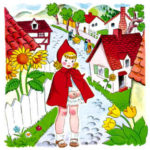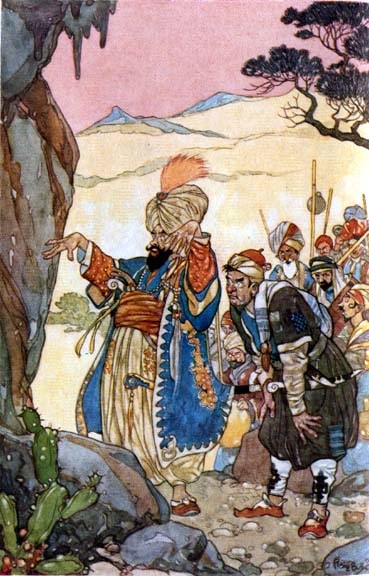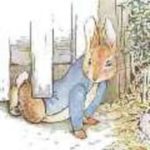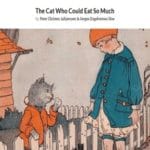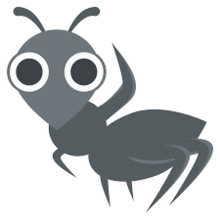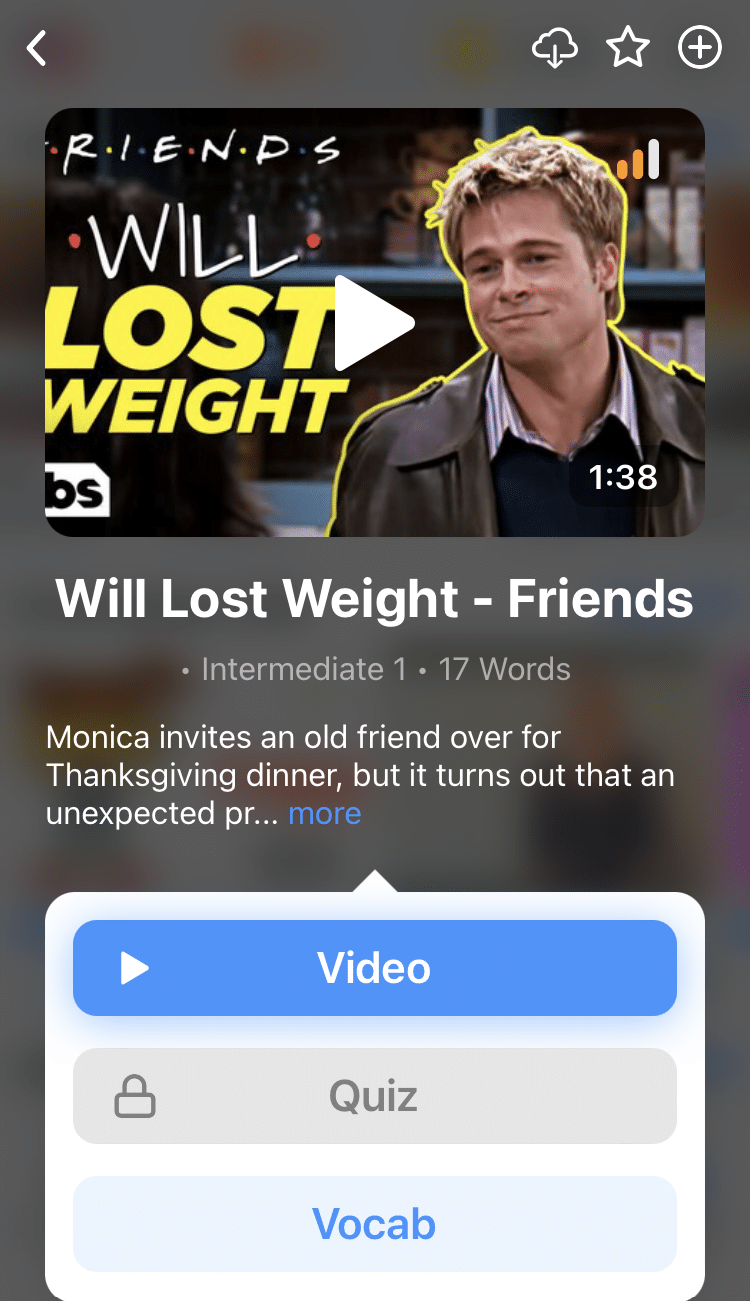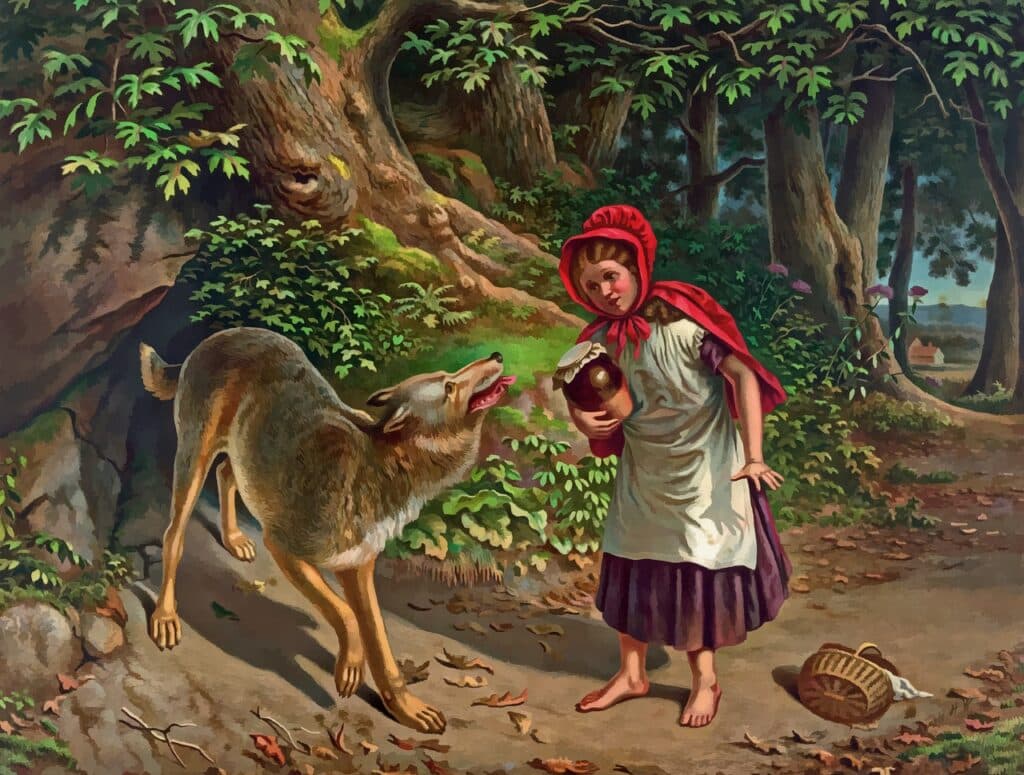
7 Easy English Fairy Tales for Learners
Once upon a time, there was a dedicated English learner looking for a fun way to practice his language skills.
“But how will I improve my English?” he asked.
The answer came to him through this blog post: English fairy tales!
Easy English fairy tales can be a great way to improve your language skills while entertaining yourself at the same time.
Contents
- 7 Magical English Fairy Tales for Beginner-Level Learners
- How Can Easy English Fairy Tales Help You Learn the Language?
- Where Can You Find Easy English Fairy Tales Online?
- And One More Thing...
Download: This blog post is available as a convenient and portable PDF that you can take anywhere. Click here to get a copy. (Download)
7 Magical English Fairy Tales for Beginner-Level Learners
“The Princess and the Pea”
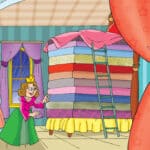
The story itself uses a lot of verbs in the simple past tense (the most basic form of the past tense in English) such as was , wanted , traveled and thought . This can provide great practice for English learners.
Words to know beforehand (before reading the story):
- Plight — a dangerous or difficult situation
- Scarcely — almost not at all
- Defect — an imperfection or problem
- Genuine — sincere
- Dreadful — awful
“Little Red Riding Hood”
The story of “Little Red Riding Hood” is another famous fairy tale that was written by Charles Perrault. It tells the story of a little girl who wanders (walks in a relaxed way) into the woods and is tricked by a wolf who impersonates (pretends to be) her grandmother.
This story has especially easy verbs that’ll help you expand your list of English action vocabulary and follow along with the story better.
Words to know beforehand:
- Dawdle — to go slowly
- Shadow — a dark shape or area
- Hood — a head covering, usually attached to a coat or cape
- Gobbled — ate quickly
- Cottage — a small country house
“The Frog Prince”
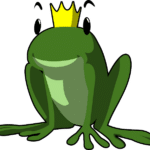
The story is full of useful adjectives that provide great English practice and offer an opportunity to add some basic vocabulary to your knowledge.
Words to know beforehand:
- Jewels — precious stones
- Unwilling — not wanting to do something
- Cruel — mean; causing suffering on purpose
- Misfortunes — bad situations or bad luck
- Merriment — fun; happiness
“Ali Baba and the Forty Thieves”
This fairy tale comes from a larger collection of stories entitled “One Thousand and One Arabian Nights.” The story follows Ali Baba as he has to outsmart a group of robbers.
English learners can benefit from paying attention to the common transition words and phrases used throughout the story. Transition words and phrases provide a way to get from one part of a story to the next. Some examples from this fairy tale include one day , then , at last and before . These are great phrases to incorporate (include; add) into your everyday English.
Words to know beforehand:
- Merchant — someone whose job usually involves trading
- Conceal — hide
- Heap — a large pile
- Envy — jealousy
- Prosperity — being wealthy or successful
“The Tale of Peter Rabbit”
One of the many beautiful little stories by Beatrix Potter, “The Tale of Peter Rabbit” shows what happens when a young rabbit named Peter gets into trouble for stealing food from Mr. McGregor’s garden.
There are plenty of wonderful vocabulary words related to nature and food in this story for English learners to discover.
Words to know beforehand:
- Mischief — misbehavior
- Loaf — a quantity of bread or another baked good
- Rake — a gardening tool used to collect leaves
- Wriggled — squirmed; moved around wildly
- Puzzled — confused
“The Cat Who Could Eat So Much”
“The Cat Who Could Eat So Much” is a great little tale by writers Peter Christen Asbjørnsen and Jørgen Engebretsen Moe. The story is about a cat who meets a host of (several different) characters as he eats everything he can find.
The story uses a lot of repetition, which makes it slightly easier for English learners to read, and it includes a lot of animal names and vocabulary to learn.
Words to know beforehand:
- Mush — a type of soft, wet food
- Stable — the structure in a barn where a horse lives
- Seized — grabbed
- Hardly — not very much at all
- Orchard — a large field of fruit trees
“The Beetle Who Went on His Travels”
This fairy tale by Hans Christian Andersen follows the story of a conceited (proud or vain) beetle who believes that he should get golden shoes like the Emperor’s horse.
There are many instances of the English comparative and superlative (when you compare two or more things) throughout this story that can help learners get an idea of how to form these important structures. Some examples from the story include more valuable , as good as and better .
Words to know beforehand:
- Shod — to put shoes on a horse
- Yonder — over there
- Delicate — fragile
- Fatigued — tired
- Grander — more impressive, beautiful or rich
How Can Easy English Fairy Tales Help You Learn the Language?
Not only are fairy tales entertaining and fun to read, but there are many factors that make them a great choice for English learners.
For starters, they’re short, so you can usually read them in one sitting. Shorter works are also easier to start out with so that you don’t feel overwhelmed by too much English at one time.
Additionally, learners are probably already familiar with fairy tales since they’re translated into many different languages and taught all over the world to children. Already knowing what the story is about will help you follow along in English.
Since fairy tales are typically meant for children, they tend to use lower-level English vocabulary and sentence structure, meaning that they’re the appropriate level for beginner English learners.
Fairy tales also often include easy dialogue or repetition to tell the story, which means that, in addition to improving your English reading skills, you’re able to easily learn English through these stories.
Where Can You Find Easy English Fairy Tales Online?
This post only has a few English fairy tales, but there are so many more out there. That means many more stories to learn from!
For more easy English fairy tales, here are a few online resources:
- Storynory: Storynory is a fabulous site that uses both written texts and audio recordings to provide tons of fairy tales and other stories. The site divides fairy tales by author or theme, so they’re easy to sort through.
- Stories to Grow By: This is another site that pairs audio recordings with written texts. Their classic fairy tales are easy to understand and sometimes accompanied by beautiful illustrations.
- Storyberries: Another great option, Storyberries features a blend of popular and lesser-known fairy tales. You’re sure to discover a new story you’ve never heard of before if you look through the many options here.
- Hellokids: Hellokids is another wonderful site with tons of fairy tales divided by author. The stories are presented in the format of a small book with pages you turn as you go.
- FluentU: A language learning program, FluentU teaches English using a library of short English videos.
FluentU takes authentic videos—like music videos, movie trailers, news and inspiring talks—and turns them into personalized language learning lessons.
You can try FluentU for free for 2 weeks. Check out the website or download the iOS app or Android app.
P.S. Click here to take advantage of our current sale! (Expires at the end of this month.)
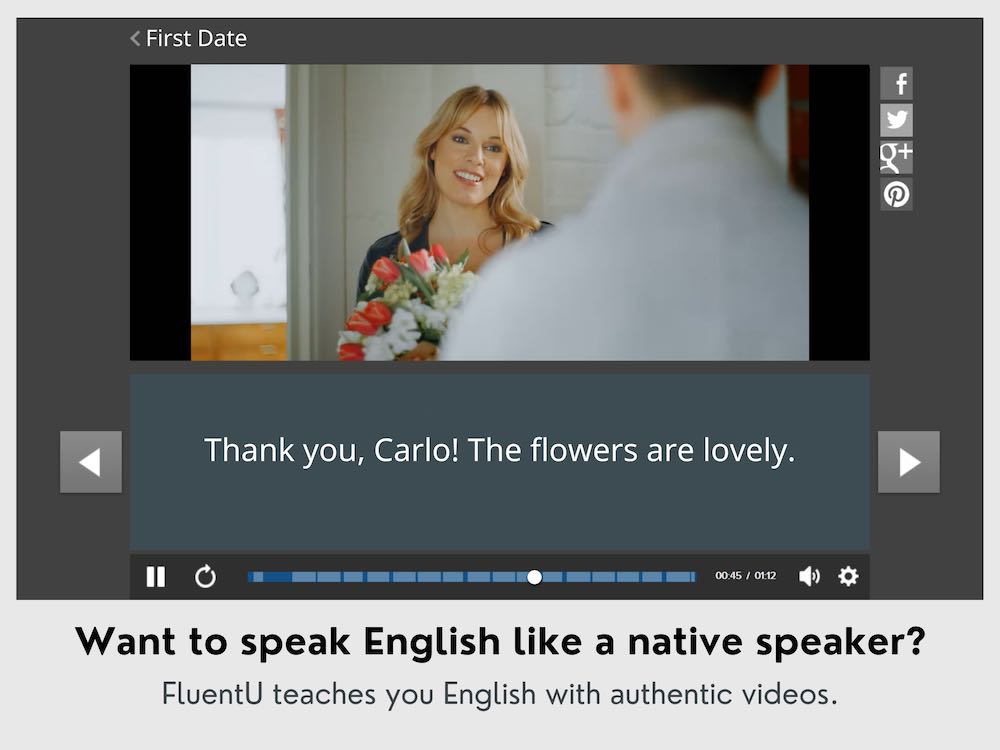
With these seven magical fairy tales to get you started and a variety of places to find other stories online, you’re ready to live happily ever after with your English studies!
Download: This blog post is available as a convenient and portable PDF that you can take anywhere. Click here to get a copy. (Download)
And One More Thing...
If you like learning English through movies and online media, you should also check out FluentU. FluentU lets you learn English from popular talk shows, catchy music videos and funny commercials, as you can see here:
The FluentU app and website makes it really easy to watch English videos. There are captions that are interactive. That means you can tap on any word to see an image, definition, and useful examples.
For example, when you tap on the word "searching," you see this:
Learn all the vocabulary in any video with quizzes. Swipe left or right to see more examples for the word you’re learning.

FluentU helps you learn fast with useful questions and multiple examples. Learn more.
The best part? FluentU remembers the vocabulary that you’re learning. It gives you extra practice with difficult words—and reminds you when it’s time to review what you’ve learned. You have a truly personalized experience.
Start using the FluentU website on your computer or tablet or, better yet, download the FluentU app from the iTunes or Google Play store. Click here to take advantage of our current sale! (Expires at the end of this month.)
